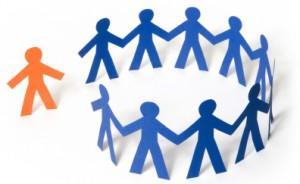
Opower, which we profiled earlier, recent appeared in a New York Times article about the influence of peers and peer pressure on behavior. The article starts off by talking about a “social norming” experiment at Northern Illinois University to tackle the heavy drinking problem found on campus. Basically, by changing students’ perceptions about how much drinking was going on at the college (even if, in fact, heavy drinking was still going on), the students responded with lower estimates of the amount of drinking that they thought was taking place while actually drinking less themselves. This same tactic is put to use by Opower to cut (and sustain) power consumption by at least 2%. The idea is simple. The power companies that work with Opower compare your gas or electric bill with neighbors who have houses of a similar size. It gives you a simple reward – a smiley face – if your house is in the top 20% of house using the least energy, and also provides tips on how you can further save energy to reduce your usage. We humans are indeed social animals and really do care about what our peers are doing and how we stack up within the group.
This kind of social reinforcement has been applied to other environmental dilemmas as well. For example, to stop people from taking wood from Petrified Forest National Park, “telling visitors ‘please don’t remove the wood’ and showing a lone thief inside a red circle and slash worked five times better than telling people that many past visitors have removed wood, with a picture of three thieves.” If three people are shown taking the wood, the social urge is to join them in stealing! Likewise, the proportion of people reusing towels at hotels instead of getting a new set every day also can be influenced by wording the message in a way that shows what the majority of people are doing. “Most guests re-use their towels” is 26 percent more effective than “please protect the environment by reusing your towels.” It was also found that success is more likely in social norming if the person receives the message just before the behavior is made. There is also a problem with this method, however. Once people know where they fit in the group, they are likely to drift to the middle. Say they are saving a lot of energy over their neighbors on their electric bill, but they see some people are barely saving anything. Well, the tendency is to cut back toward the mean. The phenomenon is called the boomerang effect, though it can be overcome through little changes like the addition of smiley faces in the Opower example.
What other environmental problems could be tackled through application of such ideas? Would it work on a non-individual level? What about a comparison of city recycling rates showing that “most municipalities in the U.S. recycle 30% or more of their waste” for example? It seems a lot of behavior could be influenced simply by pointing out what people are already doing or phrasing the requested behavior in a slightly different way.




